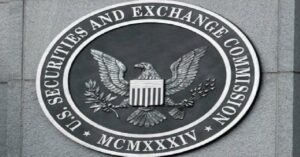PWG report on stablecoins misses the mark
Stablecoin market capitalization has risen 500% in past twelve months. The growth aligns with growing interest in transacting outside heavily regulated banking system. People are seeing myriad benefits from stablecoin use including yields from “staking,” more fluid trades, smaller fees, simple borrowing procedures, and smooth cross-border payments among many others.
The Biden administration looks on with alarm and suspicion. Last summer, the ‘President’s Working Group’ (PWG), composed of several financial regulators, announced it would evaluate stablecoins and recommend action. The president should scrap the gloomy report recently issued by the PWG and let the stablecoin market develop.
Because of their value in the crypto ecosystem, stablecoins demand more interest than their dollar-pegged book value, to the benefit of ordinary American savers. Virtual marketplaces like Nexo and Celsius offer 10% APY or higher to deposit stablecoins.
PWG report embodies bureaucratic quagmire
The PWG report ignores stablecoin benefits and instead reflects a myopic, risk-averse, regulator-centric view of crypto that permeates the executive. The dour report warns of every possible stablecoin risk. It suggests Congress create a “comprehensive” regulatory apparatus to oversee the supposed risks and warns it will pursue the matter solo if Congress fails to act. The Financial Stability Oversight Council (FSOC), an administrative board created through Dodd-Frank, could designate stablecoins systematically important thereby subjecting them to onerous oversight, compliance, and enforcement.
Odd things arise from this approach. First it is ironic the administration insists the stablecoin phenomenon is so unwieldly it requires a new regulatory cloak whilst Gary Gensler, SEC Chair and PWG member, has insisted all year the larger crypto space needs no such overhaul as it fits within Howey-investment-contract analysis and many cryptocurrencies are already subject to the SEC’s jurisdiction.
It is curious why this relatively tiny $139 billion market would need a comprehensive solution but the greater the greater $3 trillion crypto market must conform with decades-old investment-contract analysis that Congress never defined in the original statute. The extent of Mr. Gensler’s guidance boils down to enforcement, period. Unsurprisingly, the SEC has stablecoin issuers Tether and Circle in its crosshairs.
PWG report sees risks where they don’t exist
But as the Digital Chamber of Commerce argues, stablecoins, a tiny subset of the overall crypto market, already fit into regulatory apparatus: “applicable regulatory frameworks can involve money transmission laws and state-level trust company charters on the federal level, and FinCEN, CFPB, and CFTC regulations on the federal level.”
This system works as intended. When stablecoin Tether allegedly used shady accounting practices for stating its reserves, both New York state and CFTC levied fines. Now all major stablecoins voluntarily publish their reserves on varying schedules. In fact, Grant Thorton LLC a prestigious accounting firm attests to stablecoin Circle’s reserves.
Second the bureaucratic worrywarts concern about risks, which the report classifies in several distinct ways, is unfounded. The market is not only miniscule compared with the crypto market but other financial sectors as well. As Cato Institute’s Norbert Michel relays, circulating dollars constitute $2 trillion, treasuries $5.4 trillion, money-market funds $4.5 trillion, and equities $40.7 trillion. An FSOC ‘systematically important’ designation would be well disproportionate to its size. In a letter to Treasury Secretary Janet Yellen, Senator Patrick Toomey (R-PA) explains, the Clearing House Payment Company, one of only eight designated systematically important financial market utilities, clears and settles $1.8 trillion payments per day.
Stablecoins are less risky than other assets
Further, stablecoins because of their 1:1 pegs pose less systemic risk than other financial instruments. As the Digital Chamber of Commerce states:
[L]eading U.S.-headquartered stablecoin payments systems – unlike banks – are not leveraged. Instead, the reserves of these stablecoin payments systems are held almost entirely in cash or cash equivalents. And, notably, the only sizable U.S. dollar-pegged, cryptocurrency backed stablecoin is over collateralized. The reserves of these stablecoin payments systems arguably have a much lower risk profile than permissible investments of other state-regulated money services businesses.
Finally, PWG advocacy for “comprehensive” federal oversight, while unsurprising, should be examined by the results of other such federal efforts. Empirical evidence shows the Securities Act of 1933 did little to thwart fraudsters. Dodd-Frank has been worse, with its notable accomplishments being slowing the IPO market, killing off free bank accounts, and destroying money market mutual funds. These laws did no more for financial integrity than McCain-Feingold did to restore trust in campaign finance. The list goes on.
In fact, Congress’ only successful financial reforms have been deregulatory. The Small Business Investment Incentive Act of 1980 led to the wildly successful Reg D. The Jumpstart Our Business Startups Act of 2012, is slowly creating a business-capitalization revolution with Regulation Crowdfunding and Regulation A+.
The PWG should allow stablecoins to flourish and abandon the overbearing regulatory instinct to suffocate innovation it does not understand. If it does this, the stablecoin market will grow and allow ordinary people to prosper from its success.
By Jossey PLLC
A version of this post originally appeared on the blog of the Competitive Enterprise Institute on November 22, 2021. https://cei.org/blog/biden-administration-seeks-to-punish-stablecoin-success/








